I want to fill the area overlapping between two normal distributions. I've got the x min and max, but I can't figure out how to set the y boundaries.
I've looked at the plt documentation and some examples. I think this related question and this one come close, but no luck. Here's what I have so far.
import numpy as np
import seaborn as sns
import scipy.stats as stats
import matplotlib.pyplot as plt
pepe_calories = np.array([361, 291, 263, 284, 311, 284, 282, 228, 328, 263, 354, 302, 293,
254, 297, 281, 307, 281, 262, 302, 244, 259, 273, 299, 278, 257,
296, 237, 276, 280, 291, 278, 251, 313, 314, 323, 333, 270, 317,
321, 307, 256, 301, 264, 221, 251, 307, 283, 300, 292, 344, 239,
288, 356, 224, 246, 196, 202, 314, 301, 336, 294, 237, 284, 311,
257, 255, 287, 243, 267, 253, 257, 320, 295, 295, 271, 322, 343,
313, 293, 298, 272, 267, 257, 334, 276, 337, 325, 261, 344, 298,
253, 302, 318, 289, 302, 291, 343, 310, 241])
modern_calories = np.array([310, 315, 303, 360, 339, 416, 278, 326, 316, 314, 333, 317, 357,
304, 363, 387, 279, 350, 367, 321, 366, 311, 308, 303, 299, 363,
335, 357, 392, 321, 361, 285, 321, 290, 392, 341, 331, 338, 326,
314, 327, 320, 293, 333, 297, 315, 365, 408, 352, 359, 312, 300,
263, 358, 345, 360, 336, 378, 315, 354, 318, 300, 372, 305, 336,
286, 296, 413, 383, 328, 418, 388, 416, 371, 313, 321, 321, 317,
402, 290, 328, 344, 330, 319, 309, 327, 351, 324, 278, 369, 416,
359, 381, 324, 306, 350, 385, 335, 395, 308])
ax = sns.distplot(pepe_calories, fit_kws={"color":"blue"}, kde=False,
fit=stats.norm, hist=None, label="Pepe's");
ax = sns.distplot(modern_calories, fit_kws={"color":"orange"}, kde=False,
fit=stats.norm, hist=None, label="Modern");
# Get the two lines from the axes to generate shading
l1 = ax.lines[0]
l2 = ax.lines[1]
# Get the xy data from the lines so that we can shade
x1 = l1.get_xydata()[:,0]
y1 = l1.get_xydata()[:,1]
x2 = l2.get_xydata()[:,0]
y2 = l2.get_xydata()[:,1]
x2min = np.min(x2)
x1max = np.max(x1)
ax.fill_between(x1,y1, where = ((x1 > x2min) & (x1 < x1max)), color="red", alpha=0.3)
#> <matplotlib.collections.PolyCollection at 0x1a200510b8>
plt.legend()
#> <matplotlib.legend.Legend at 0x1a1ff2e390>
plt.show()

Any ideas?
Created on 2018-12-01 by the reprexpy package
import reprexpy
print(reprexpy.SessionInfo())
#> Session info --------------------------------------------------------------------
#> Platform: Darwin-18.2.0-x86_64-i386-64bit (64-bit)
#> Python: 3.6
#> Date: 2018-12-01
#> Packages ------------------------------------------------------------------------
#> matplotlib==2.1.2
#> numpy==1.15.4
#> reprexpy==0.1.1
#> scipy==1.1.0
#> seaborn==0.9.0


